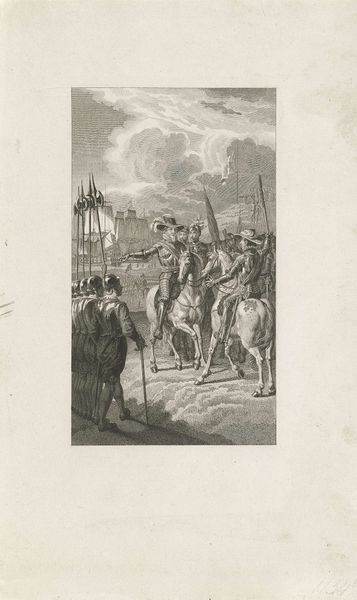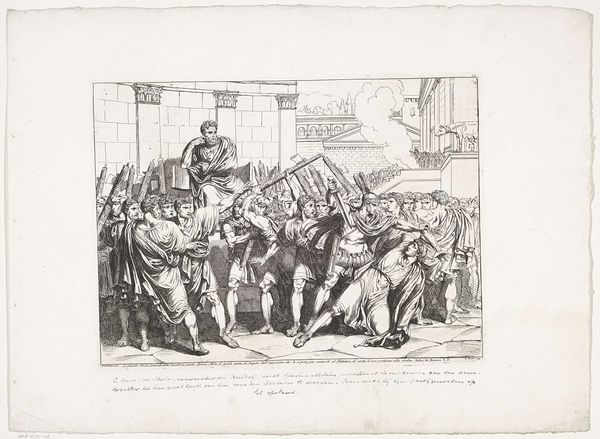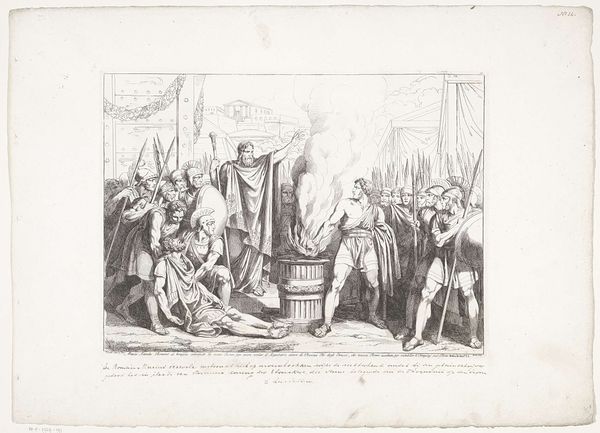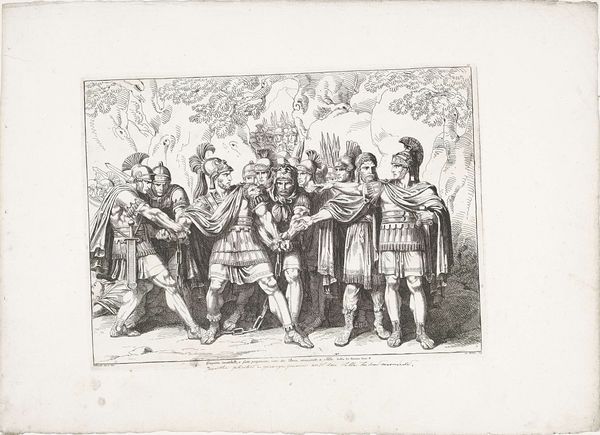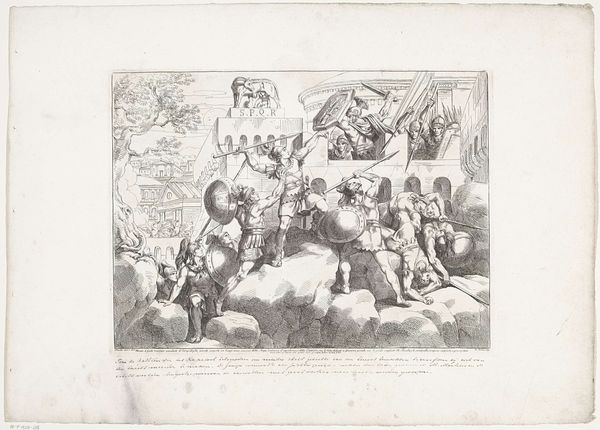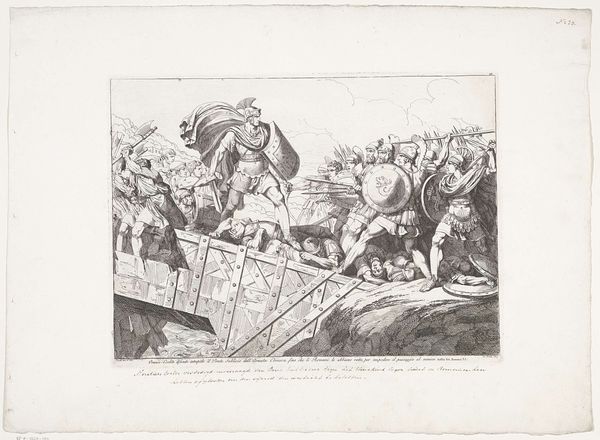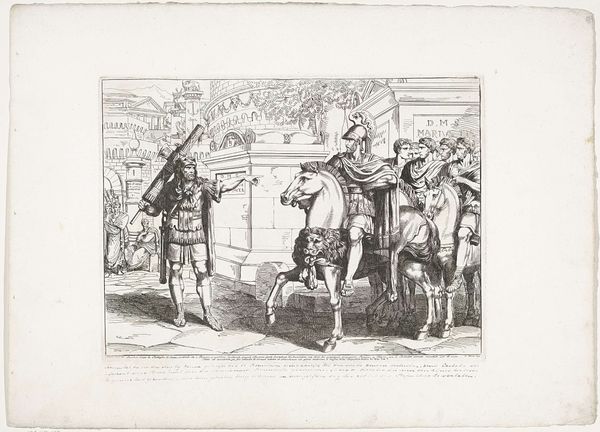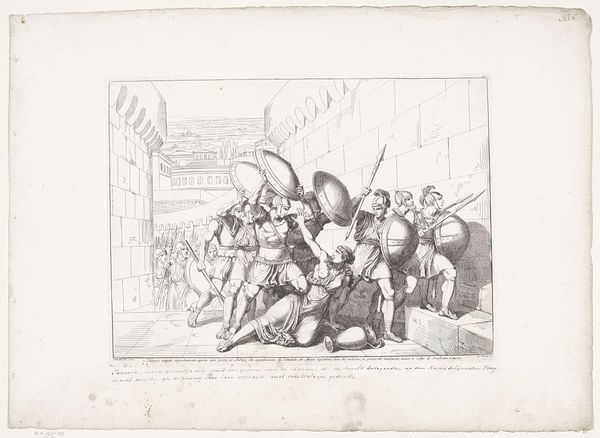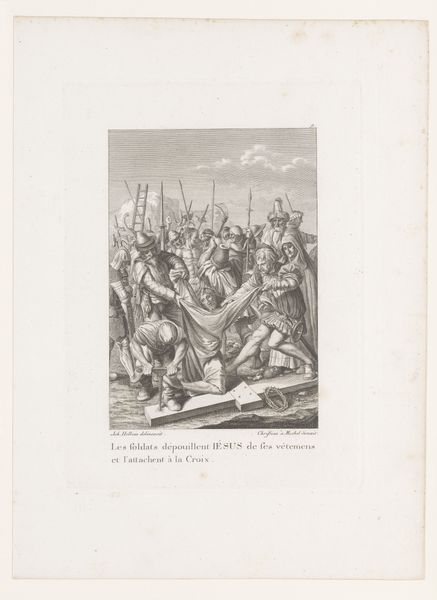
drawing, print, pen, engraving
#
drawing
#
neoclacissism
#
narrative-art
# print
#
pen sketch
#
pencil sketch
#
old engraving style
#
landscape
#
river
#
figuration
#
romanesque
#
pen
#
cityscape
#
history-painting
#
academic-art
#
engraving
Dimensions: height 314 mm, width 421 mm
Copyright: Rijks Museum: Open Domain
Bartolomeo Pinelli etched this depiction of Julius Caesar crossing the Rubicon. Observe the standards carried by Caesar's legion, adorned with the eagle, a potent symbol of Roman power and military might. The eagle, initially a symbol of the Roman god Jupiter, was adopted as the emblem of the Roman legions. It signified dominion and divine approval, an echo of earlier uses in Egyptian and Near Eastern iconography. Across millennia, the eagle reappears – from Napoleon's imperial standard to modern national emblems. This persistence reveals a deep-seated, perhaps subconscious, association with authority. Consider, too, Caesar's raised hand. This gesture, seen in countless depictions of leaders throughout history, speaks to a universal desire for control. We see it echoed in Christian art, where a raised hand signifies blessing or divine intervention. These symbols connect us, subconsciously, to the deep, emotional currents of history. Thus, the image reminds us of the cyclical progression of symbols. They resurface, evolve, and take on new meanings, echoing through history, reflecting our collective fears, and aspirations.
Comments
No comments
Be the first to comment and join the conversation on the ultimate creative platform.
